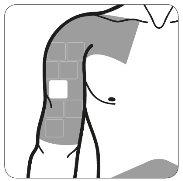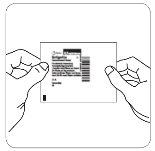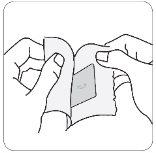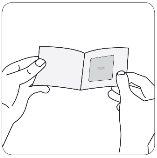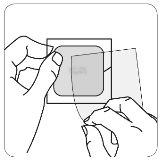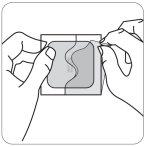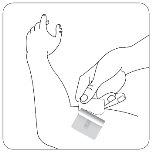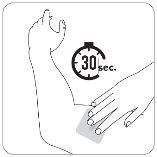
ДАРИАНТЕ 8 мг/24 часа ТРАНСДЕРМАЛЬНЫЕ ПЛАСТЫРИ
Спросите врача о рецепте на ДАРИАНТЕ 8 мг/24 часа ТРАНСДЕРМАЛЬНЫЕ ПЛАСТЫРИ

Инструкция по применению ДАРИАНТЕ 8 мг/24 часа ТРАНСДЕРМАЛЬНЫЕ ПЛАСТЫРИ
Введение
Инструкция: информация для пользователя
Дарианте 4 мг/24 ч трансдермальные пластыри ЕФГ
Дарианте 6 мг/24 ч трансдермальные пластыри ЕФГ
Дарианте 8 мг/24 ч трансдермальные пластыри ЕФГ
ротиготин
Прочитайте внимательно всю инструкцию перед началом использования препарата, поскольку она содержит важную информацию для вас.
- Сохраните эту инструкцию, поскольку вам может потребоваться прочитать ее снова.
- Если у вас есть какие-либо вопросы, проконсультируйтесь с вашим врачом или фармацевтом.
- Этот препарат назначен только вам, и не передавайте его другим людям, даже если они имеют те же симптомы, что и вы, поскольку это может нанести им вред.
- Если вы испытываете побочные эффекты, проконсультируйтесь с вашим врачом или фармацевтом, даже если они не указаны в этой инструкции. См. раздел 4.
Содержание инструкции
- Что такое Дарианте и для чего он используется
- Что нужно знать перед началом использования Дарианте
- Как использовать Дарианте
- Возможные побочные эффекты
- Хранение Дарианте
- Содержание упаковки и дополнительная информация
1. Что такое Дарианте и для чего он используется
Что такое Дарианте
Дарианте содержит активное вещество ротиготин.
Он относится к группе препаратов, известных как «агонисты дофамина». Дофамин является важным посредником в мозге для движения.
Для чего используется Дарианте
Дарианте используется у взрослых для лечения симптомов:
- Болезни Паркинсона - Дарианте можно использовать самостоятельно или с другим препаратом под названием леводопа.
2. Что нужно знать перед началом использования Дарианте
Не используйте Дарианте, если:
- вы аллергичнык ротиготинуили к любому из других компонентовэтого препарата (перечисленных в разделе 6)
- вы будете проходить магнитно-резонансную томографию(МРТ) (диагностические изображения внутренних органов, созданные с помощью магнитной энергии вместо энергии рентгеновских лучей)
- вам требуется кардиоверсия(специальное лечение для нарушений сердечного ритма).
Вам необходимо удалить пластырь ротиготина прямо перед проведением магнитно-резонансной томографии (МРТ) или кардиоверсии, чтобы избежать ожогов кожи, поскольку пластырь содержит алюминий. Вы можете нанести новый пластырь, когда эти процедуры будут завершены.
Не используйте ротиготин, если у вас возникла одна из вышеуказанных ситуаций. Если вы не уверены, проконсультируйтесь с вашим врачом, фармацевтом или медсестрой.
Предостережения и меры предосторожности
Проконсультируйтесь с вашим врачом, фармацевтом или медсестрой перед началом использования ротиготина. Поскольку:
- вам необходимо регулярно контролировать артериальное давлениево время использования ротиготина, особенно в начале лечения. Ротиготин может повлиять на ваше артериальное давление.
- вам необходимо регулярно проверять зрениево время использования ротиготина. Если между проверками вы заметите какие-либо проблемы со зрением, немедленно сообщите об этом вашему врачу.
- если у вас тяжелые проблемы с печенью, ваш врач может потребовать корректировки дозы. Если во время лечения ротиготином ваши проблемы с печенью ухудшатся, немедленно сообщите об этом вашему врачу.
- у вас могут быть реакции на коже, вызванные пластырем – см. «Проблемы с кожей, вызванные пластырем» в разделе 4.
- у вас могут быть непроизвольные мышечные сокращения, которые вызывают аномальные движения или позы, часто повторяющиеся (дистония), аномальные позы или латеральная флексия спины (также называемая плейростотонусом или синдромом Пизы). Если это произойдет, ваш врач может решить корректировать ваше лечение.
- вы можете чувствовать сильную сонливость или внезапно заснуть– см. «Вождение и использование машин» в разделе 2.
Если вы испытываете эти симптомы после начала лечения ротиготином, свяжитесь с вашим врачом.
Препараты, используемые для лечения болезни Паркинсона, должны быть постепенно снижены или прекращены. Сообщите вашему врачу, если после прекращения или снижения лечения ротиготином вы испытываете симптомы, такие как депрессия, тревога, усталость, потливость или боль.
Вы можете потерять сознание
Ротиготин может вызвать потерю сознания. Это может произойти особенно при начале лечения ротиготином или при увеличении дозы. Сообщите вашему врачу, если вы потеряли сознание или чувствуете себя головокружительно.
Изменения в поведении и аномальные мысли
Ротиготин может вызывать побочные эффекты, которые изменяют ваше поведение (то, как вы действуете). Если ваша семья или опекун, или ваш врач, обеспокоены изменениями в вашем поведении, может быть полезно сказать члену вашей семьи или опекуну, что вы используете этот препарат, и прочитать инструкцию.
Это включает:
- необходимость потребления больших доз ротиготина или других препаратов, используемых для лечения болезни Паркинсона
- тревога или необходимость вести себя аномально, которую вы не можете контролировать и которая может нанести вред вам или другим людям
- аномальные мысли или поведение.
Для получения более подробной информации см. «Изменения в поведении и аномальные мысли» в разделе 4.
Дети и подростки
Этот препарат недолжен быть назначен детяммладше 18 лет, поскольку его безопасность и эффективность в этой возрастной группе неизвестны.
Другие препараты и Дарианте
Сообщите вашему врачу или фармацевту, если вы используете, недавно использовали или можете использовать любой другой препарат. Это включает препараты без рецепта и препараты на основе растений.
Если вы одновременно принимаете ротиготин и леводопу, некоторые побочные эффекты могут ухудшиться. Это включает видение или слышание вещей, которые не являются реальными (галлюцинации), непроизвольные движения, связанные с болезнью Паркинсона (дискинезия), отеки на ногах и руках.
Не принимайте следующие препараты во время использования ротиготина, поскольку они могут уменьшить его эффект:
- препараты «антипсихотические» - используемые для лечения определенных психических заболеваний
- метоклопрамид - используемый для лечения тошноты и рвоты.
Проконсультируйтесь с вашим врачом перед использованием ротиготина, если вы принимаете:
- седативные препараты, такие как бензодиазепины, или препараты, используемые для лечения психических расстройств или депрессии
- препараты, снижающие артериальное давление. Ротиготин может снижать артериальное давление при стоянии - этот эффект может ухудшиться при приеме препаратов для снижения артериального давления.
Ваш врач сообщит вам, безопасно ли принимать эти препараты во время использования ротиготина.
Использование Дарианте с продуктами питания, напитками и алкоголем
Поскольку ротиготин попадает в кровоток через кожу, прием продуктов питания или напитков не влияет на то, как этот препарат всасывается. Проконсультируйтесь с вашим врачом, можно ли пить алкоголь во время использования ротиготина.
Беременность и лактация
Не используйте ротиготин, если вы беременны. Это связано с тем, что неизвестны эффекты ротиготина на беременность и плод.
Не кормите грудью во время лечения ротиготином. Это связано с тем, что ротиготин может попасть в грудное молоко и повлиять на вашего ребенка. Также вероятно, что количество вырабатываемого молока уменьшится.
Если вы беременны или кормите грудью, считаете, что можете быть беременной или планируете стать беременной, проконсультируйтесь с вашим врачом или фармацевтом перед использованием этого препарата.
Вождение и использование машин
Ротиготин может вызвать сильную сонливость, и вы можете внезапно заснуть. Если это произойдет, не водите машину. В отдельных случаях некоторые люди заснули во время вождения, что привело к авариям.
Также не используйте инструменты или машины, если вы чувствуете сильную сонливость - или выполняйте любую деятельность, которая может поставить вас или других людей под угрозу серьезной травмы.
3. Как использовать Дарианте
Следуйте точно инструкциям по применению этого препарата, указанным вашим врачом или фармацевтом. В случае сомнений проконсультируйтесь с вашим врачом или фармацевтом.
Какой дозы пластыря использовать
Ротиготин выпускается в пластырях разных доз, которые выделяют препарат в течение 24 часов. Дозы составляют 1 мг/24 ч, 2 мг/24 ч и 3 мг/24 ч для лечения синдрома беспокойных ног.
- Ваша начальная доза будет составлять 1 мг/24 ч в день.
- Начиная со второй недели, суточная доза будет увеличиваться на 1 мг каждую неделю до достижения поддерживающей дозы, подходящей для вас. Это происходит, когда вы и ваш врач подтверждаете, что ваши симптомы достаточно хорошо контролируются и побочные эффекты препарата являются приемлемыми.
- Следуйте точно инструкциям, указанным вашим врачом.
- Максимальная доза составляет 3 мг в день.
Если вам необходимо прекратить использование этого препарата, см. «Если вы прекратите лечение Дарианте» в разделе 3.
Как использовать пластыри Дарианте:
Ротиготин представляет собой пластырь, который наносится на кожу.
- Проверьте, что вы удалили использованный пластырь перед нанесением нового.
- Нанесите новый пластырь на различную область кожи каждый день.
- Оставьте пластырь на коже в течение 24 часов, затем удалите его и нанесите новый.
- Замените пластырьпримерно в одно и то же время каждый день.
- Не разрезайте пластыри ротиготинана кусочки.
Где нанести пластырь
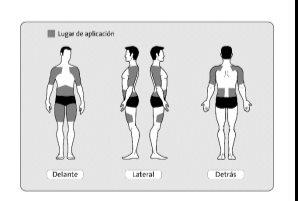 Нанесите клеящую сторону пластыря на чистую, сухую и здоровую кожу в следующих областях, как указано в серых зонах рисунка:
Нанесите клеящую сторону пластыря на чистую, сухую и здоровую кожу в следующих областях, как указано в серых зонах рисунка:
- Плечо или верхняя часть руки.
- Живот.
- Бока (области между ребрами и бедрами).
- Бедро или таз.
Чтобы избежать раздражения кожи
|
|
Если у вас продолжаются проблемы с кожей, вызванные пластырем, см. «Проблемы с кожей, вызванные пластырем» в разделе 4 для получения более подробной информации.
Чтобы предотвратить отсоединение или сдувание пластыря
- Ненаносите пластырь на область, где он может быть треноженным тесной одеждой.
- Неиспользуйте кремы, масла, лосьоны, порошкиили любой другой продукт для кожив области, где будет нанесен пластырь. И также не наносите его на уже используемый пластырь или рядом с ним.
- Если вам необходимо нанести пластырь на область кожи, где есть волосы, за 至少 3 днядо нанесения пластыря на эту область необходимо брить(удалить волосы) с этой области кожи.
- Если края пластыря отсоединяются, вы можете закрепить пластырь с помощью пластыря.
Если пластырь отсоединяется, необходимо нанести новый пластырь на остаток дня и на следующий день нанести новый пластырь в обычное время.
- Вам необходимо избегатьтого, чтобы область пластыря нагревалась- например, слишком сильный солнечный свет, сауна, горячие ванны, тепловые компрессы или грелки. Это связано с тем, что препарат может быть высвобожден быстрее. Если вы считаете, что нагрелись слишком сильно, свяжитесь с вашим врачом или фармацевтом.
- Проверяйте, что пластырь не отсоединился после занятий, таких как купание, душ или упражнения.
- Если пластырь раздражает вашу кожу, вам необходимо защититьраздраженную область от прямого солнечного света. Это связано с тем, что воздействие солнца может вызвать изменения цвета кожи.
Как использовать пластырь
- Каждый пластырь упакован индивидуально в пакет.
- Прежде чем открыть пакет, решите, где вы будете наносить новый пластырь, и проверьте, что вы удалили использованный пластырь.
- Когда вы откроете пакет и удалите защитную пленку с пластыря, необходимо немедленно нанести пластырь на кожу.
|
|
|
|
|
|
Удалите защитную пленку коричневого цвета с верхней части пластыря и выбросьте ее. Прозрачная защитная пленка (пленка высвобождения) покрывает клеящую сторону пластыря. |
|
|
|
|
|
Держите его под давлением в течение примерно 30 секунд. Таким образом, вы обеспечите, что пластырь находится в контакте с кожей и края хорошо прилегают. Мойте руки водой и мылом сразу после обращения с пластырем. |
|
Как удалить использованный пластырь
- Удалите использованный пластырь медленно и осторожно.
- Аккуратно промойте область теплой водой и мягким мылом. Таким образом, вы удалите остатки клея, оставшиеся на коже. Также можно использовать небольшое количество детского масла, чтобы удалить остатки клея, которые еще остаются.
- Не используйте алкоголь или другие жидкие растворители - такие как жидкость для снятия лака. Это может раздражать вашу кожу.
Если вы примете больше Дарианте, чем необходимо
Использование более высоких доз ротиготина, чем назначил ваш врач, может вызвать побочные эффекты, такие как тошнота или рвота, снижение артериального давления, видение или слышание вещей, которые не являются реальными (галлюцинации), путаница, чрезмерная сонливость, непроизвольные движения и судороги. В этих случаях сообщите вашему врачу или пойдите в больницу как можно скорее. Вам будет указано, что делать.
В случае передозировки или случайного приема препарата немедленно проконсультируйтесь с вашим врачом или фармацевтом или позвоните в Центр токсикологической информации, телефон 91 562 04 20, указав препарат и количество, принятое внутрь.
Если вы забыли заменить пластырь в обычное время
- Если вы забыли заменить пластырь в обычное время, замените его, как только вспомните. Удалите использованный пластырь и нанесите новый.
- Если вы забыли нанести новый пластырь после удаления использованного, как только вспомните, нанесите новый.
В обоих случаях на следующий день нанесите новый пластырь в обычное время. Не принимайте двойную дозу, чтобы компенсировать пропущенные дозы.
Если вы прекратите лечение Дарианте
Не прекращайте использование ротиготина без предварительной консультации с вашим врачом. Внезапное прекращение может вызвать состояние, называемое «мalignant нейролептический синдром», которое может поставить под угрозу вашу жизнь. Симптомы включают потерю мышечного движения (акинезия), мышечную жесткость, лихорадку, нестабильное кровяное давление, увеличение частоты сердечных сокращений (тахикардию), путаницу, снижение сознания (например, кому).
Если ваш врач указывает, что вам необходимо прекратить лечение ротиготином, суточная дозаротиготина должна быть постепенно снижена:
- 1 мг каждые 2 дня - если вы используете ротиготин для синдрома беспокойных ног
Если у вас есть какие-либо другие вопросы о использовании этого препарата, проконсультируйтесь с вашим врачом или фармацевтом.
4. Возможные побочные эффекты
Как и все лекарства, это лекарство может вызывать побочные эффекты, хотя не все люди их испытывают. Сообщите вашему врачу, фармацевту или медсестре, если вы заметите любой побочный эффект.
Самые вероятные побочные эффекты в начале лечения
У вас могут быть тошнотаи рвотав начале лечения. Эти эффекты обычно легкие или умеренные и длятся короткое время. Вы должны проконсультироваться с вашим врачомв случае, если эффекты длятся долго или если они вас беспокоят.
Проблемы с кожей, вызванные пластырем
- Может появиться покраснение и зуд в области кожи, где был применен пластырь – эти реакции обычно легкие или умеренные.
- Эти реакции обычно исчезают через несколько часов после удаления пластыря.
- Проконсультируйтесь с вашим врачом, если у вас есть кожная реакция, которая длится более нескольких дней, если она сильная или если она распространяется за пределы области, покрытой пластырем.
- Избегайте воздействия солнца и соляриев на участки кожи, которые показывают любую реакцию, вызванную пластырем.
- Чтобы помочь предотвратить кожные реакции, пластырь следует применять в разных местах каждый день, и использовать одну и ту же область снова только после 14 дней.
Вы можете потерять сознание
Ротиготин может вызывать потерю сознания. Это может произойти особенно когда начинается лечение ротиготином или когда увеличивается доза. Сообщите вашему врачу, если вы потеряли сознание или чувствуете себя головокружительным.
Изменения в поведении и необычные мысли
Сообщите вашему врачу, если вы заметите любой изменение в поведении, мыслях или обоих, из перечисленных ниже.
Ваш врач укажет, как управлять или уменьшить симптомы.
Если ваша семья или опекун, или ваш врач, беспокоятся о изменениях в вашем поведении, может быть полезно сказать члену вашей семьи или опекуну, что вы используете это лекарство и что он прочитает инструкцию. Ротиготин может вызывать тревогу или непреодолимое желание вести себя необычно и не быть в состоянии контролировать импульс, нападение или искушение совершить определенные действия, которые могут нанести вред вам или другим.
Эти действия могут включать:
- сильную зависимость от игр - даже если это серьезно влияет на вас или вашу семью
- измененный или повышенный сексуальный интерес и поведение, вызывающее большую обеспокоенность для вас и других - например, повышение сексуального желания
- неуправляемые покупки или чрезмерные расходы
- приступы обжорства (поедание больших количеств пищи за короткий период времени) или компульсивное поедание (поедание больше пищи, чем обычно, или больше, чем необходимо для удовлетворения вашего аппетита)
Ротиготин может вызывать другие необычные поведения и мысли, которые могут включать:
- необычные мысли о реальности
- бредовые идеи и галлюцинации (видение или слышание вещей, которые не реальны)
- спутанность сознания
- дезориентация
- агрессивное поведение
- возбуждение
- бред.
Сообщите вашему врачу, если вы заметите любой изменение в вашем поведении, мыслях или обоих, из перечисленных выше.
Ваш врач укажет, как управлять или уменьшить симптомы.
Аллергические реакции
Сообщите вашему врачу, если вы заметите признаки аллергической реакции – которая может включать отек лица, языка или губ.
Побочные эффекты при использовании ротиготина для болезни Паркинсона
Сообщите вашему врачу, фармацевту или медсестре, если вы испытываете любой из следующих побочных эффектов:
Очень часто: могут повлиять на более 1 из 10 пациентов
- головная боль
- сонливость или головокружение
- тошнота, рвота
- раздражения кожи в области применения пластыря, такие как покраснение и зуд
Часто: могут повлиять до 1 из 10 пациентов
- падения
- гипо
- потеря веса
- отеки на ногах и ступнях
- чувство слабости (усталость), чувство утомления
- повышение частоты сердечных сокращений (сердцебиение)
- запор, сухость во рту, изжога
- покраснение, повышение потливости, зуд
- вертиго (чувство вращения)
- видение или слышание вещей, которые не реальны (галлюцинации)
- пониженное артериальное давление при вставании, повышенное артериальное давление
- трудности с засыпанием, нарушения сна, трудности с поддержанием сна, кошмары, странные сны
- непроизвольные движения, связанные с болезнью Паркинсона (дискинезия)
- потеря сознания, чувство головокружения при вставании, вызванное снижением артериального давления
- неспособность контролировать импульс совершить вредное действие, включая зависимость от игр, бессмысленные повторяющиеся действия, компульсивные покупки или чрезмерные расходы
- приступы обжорства (поедание больших количеств пищи за короткий период времени), компульсивное поедание (поедание больше пищи, чем обычно, или больше, чем необходимо для удовлетворения вашего аппетита)
Не часто: могут повлиять до 1 из 100 пациентов
- размытое зрение
- прибавка в весе
- аллергическая реакция
- снижение артериального давления
- повышение частоты сердечных сокращений
- повышение сексуального желания
- анормальный сердечный ритм
- дискомфорт в желудке и боль
- общий зуд, кожные раздражения
- внезапное засыпание без предупреждения
- неспособность достичь или поддержать эрекцию
- чувство возбуждения, дезориентации, спутанности сознания или паранойи
- анормальные результаты тестов на функцию печени или повышенные
- зрительные нарушения, такие как видение цветов или огней
- повышение уровня креатинфосфокиназы (КФК) (КФК - это фермент, который в основном находится в скелетных мышцах).
Редко: могут повлиять до 1 из 1000 пациентов
- бредовые идеи
- бред
- чувство раздражительности
- агрессивное поведение
- психотические расстройства
- сыпь на больших участках тела
- мышечные спазмы (конвульсии)
Неизвестно: неизвестно, с какой частотой они происходят
- тревога по поводу приема высоких доз лекарств, таких как ротиготин – более необходимых для лечения болезни. Это известно как «синдром дисрегуляции дофамина» и может привести к чрезмерному использованию ротиготина
- диарея
- синдром опущенной головы
- рабдомиолиз (редкое тяжелое мышечное расстройство, которое вызывает боль, чувствительность и слабость мышц и может привести к проблемам с почками)
Сообщите вашему врачу, фармацевту или медсестре, если вы испытываете любой из этих побочных эффектов.
Сообщение о побочных эффектах
Если вы испытываете любой побочный эффект, проконсультируйтесь с вашим врачом или фармацевтом, даже если это возможные побочные эффекты, которые не перечислены в этом листке. Вы также можете сообщить об этом напрямую через систему фармаковигиланса лекарственных средств для человека (www.notificaram.es). Сообщая о побочных эффектах, вы можете внести свой вклад в предоставление более полной информации о безопасности этого лекарства.
5. Хранение Дарианте
Храните это лекарство вне поля зрения и досягаемости детей.
Не используйте это лекарство после даты истечения срока годности, указанной на упаковке и блистере после «CAD». Дата истечения срока годности - последний день месяца, указанного.
Это лекарство не требует специальных условий хранения.
Что делать с использованными и неиспользованными пластырями
- Использованные пластыри все еще содержат активное вещество, «ротиготин», которое может быть опасным для других. Сложите использованный пластырь с липкой стороной внутрь. Поместите пластырь в оригинальный конверт и затем выбросьте его в безопасном месте, вне досягаемости детей.
- Лекарства не должны выбрасываться в канализацию или мусор. Поместите упаковку и лекарства, которые вам больше не нужны, в пункт сбора. Спросите вашего фармацевта, как избавиться от упаковки и лекарств, которые вам больше не нужны. Таким образом, вы поможете защитить окружающую среду.
6. Содержимое упаковки и дополнительная информация
Состав Дарианте
Активное вещество - ротиготин.
- 4 мг/24 ч:
Один пластырь выпускает 4 мг ротиготина каждые 24 часа. Каждый пластырь площадью 18,4 см2 содержит 7,36 мг ротиготина.
- 6 мг/24 ч:
Один пластырь выпускает 6 мг ротиготина каждые 24 часа. Каждый пластырь площадью 27,6 см2 содержит 11,04 мг ротиготина.
- 8 мг/24 ч:
Один пластырь выпускает 8 мг ротиготина каждые 24 часа. Каждый пластырь площадью 36,8 см2 содержит 14,72 мг ротиготина.
Другие компоненты:
- Поддерживающий слой: пигментированный полиэтилен, алюминиевая фольга, покрытая полимером, оранжевая печатная краска.
- Матрица, содержащая активное вещество: токоферол, парафин, повидон K90, силиконовый клей.
- Слой выпуска: полиэстер, покрытый фторсилikonой.
- Слой покрытия: полиэстер, покрытый фторсилikonой.
Внешний вид продукта и содержимое упаковки
Дарианте - трансдермальный пластырь. Он тонкий, имеет квадратную форму с закругленными углами. Внешняя сторона коричневая и имеет надпись:
4 мг/24ч: «Ротиготин 4 мг/24 ч»
6 мг/24ч: «Ротиготин 6 мг/24 ч».
8 мг/24ч: «Ротиготин 8 мг/24 ч».
Дарианте выпускается в следующих формах:
Упаковки, содержащие 7, 14, 28, 30 или 84 (мультиупаковка, содержащая 3 упаковки по 28) пластырей, каждый пластырь находится в индивидуальном конверте.
Возможно, не все размеры упаковок будут продаваться.
Владелец разрешения на маркетинг и производитель
Владелец разрешения на маркетинг
Exeltis Healthcare, S.L
Аvenida де Миралькампо, 7
Полигон Индустриаль Миралькампо
19200 Асукека де Энарес.
Гвадалахара, Испания
Производитель
Luye Pharma AG
Ам Виндфельд 35
83714 Мизбах
Германия
Это лекарство разрешено в государствах-членах Европейского экономического пространства под следующими названиями:
Германия: Ротиготин Люе 4 мг/24 часа трансдермальный пластырь
Ротиготин Люе 6 мг/24 часа трансдермальный пластырь
Ротиготин Люе 8 мг/24 часа трансдермальный пластырь
Испания: Дарианте 4 мг/24 ч трансдермальные пластыри ЕФГ
Дарианте 6 мг/24 ч трансдермальные пластыри ЕФГ
Дарианте 8 мг/24 ч трансдермальные пластыри ЕФГ
Италия: Ротиготина Люе 4 мг/час трансдермальный пластырь
Ротиготина Люе 6 мг/час трансдермальный пластырь
Ротиготина Люе 8 мг/час трансдермальный пластырь
Дата последнего обзора этого листка:март 2024
Другие источники информации
Подробная информация о этом лекарстве доступна на сайте Испанского агентства лекарственных средств и медицинских изделий (AEMPS) (http://www.aemps.gob.es/).

Сколько стоит ДАРИАНТЕ 8 мг/24 часа ТРАНСДЕРМАЛЬНЫЕ ПЛАСТЫРИ в Испании в 2025 году?
Средняя цена на ДАРИАНТЕ 8 мг/24 часа ТРАНСДЕРМАЛЬНЫЕ ПЛАСТЫРИ в ноябрь, 2025 года составляет около 95.93 евро. Финальная стоимость может зависеть от региона, конкретной аптеки и рецептурного статуса. Для точной информации лучше проверить онлайн или в ближайшей аптеке.
- Страна регистрации
- Средняя цена в аптеках95.93 EUR
- Активное вещество
- Требуется рецептДа
- Производитель
- Информация носит справочный характер и не является медицинской рекомендацией. Перед приемом любых препаратов проконсультируйтесь с врачом. Oladoctor не несет ответственности за медицинские решения, принятые на основе этого контента.
- Аналоги ДАРИАНТЕ 8 мг/24 часа ТРАНСДЕРМАЛЬНЫЕ ПЛАСТЫРИФорма выпуска: ТРАНСДЕРМАЛЬНЫЙ ПЛАСТЫРЬ, 1 мг/24 чАктивное вещество: rotigotineПроизводитель: Exeltis Healthcare S.L.Требуется рецептФорма выпуска: ТРАНСДЕРМАЛЬНЫЙ ПЛАСТЫРЬ, 2 мг/24 чАктивное вещество: rotigotineПроизводитель: Exeltis Healthcare S.L.Требуется рецептФорма выпуска: ТРАНСДЕРМАЛЬНЫЙ ПЛАСТЫРЬ, 3 мг/24 чАктивное вещество: rotigotineПроизводитель: Exeltis Healthcare S.L.Требуется рецепт
Врачи онлайн по ДАРИАНТЕ 8 мг/24 часа ТРАНСДЕРМАЛЬНЫЕ ПЛАСТЫРИ
Консультация по дозировке, побочным эффектам, взаимодействиям, противопоказаниям и продлению рецепта на ДАРИАНТЕ 8 мг/24 часа ТРАНСДЕРМАЛЬНЫЕ ПЛАСТЫРИ – по решению врача и с учетом местных правил.




